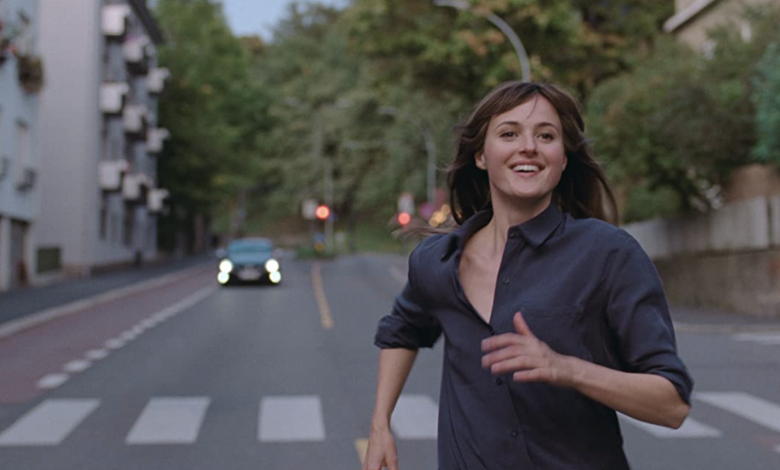The Worst Person in the World Review

Abigail Lee ’25 / Emertainment Monthly Staff Writer
There’s a moment in Joachim Trier’s The Worst Person in the World when everything becomes submerged in reflective stillness. The almost 30-year-old protagonist Julie (Renate Reinsve) escapes quietly from a party and wanders to the side of a road overlooking the Oslo cityscape. Overcome with emotion, she stares into the distance as evening creeps in. It’s the kind of overwhelming desire for something more that eats away at you before subsiding into emptiness.
This sense of hushed beauty and truth recurs throughout the film, the third of the Norwegian director’s “Oslo trilogy.” The Worst Person in the World is a coming-of-age-story that captures the unpredictability of modern life. The film, co-written by Trier and Eskil Vogt, comprises 12 chapters, a prologue, and an epilogue. In the beginning, Julie is a medical student beset by restlessness. She enacts a series of changes, first breaking up with her boyfriend then trying new career paths. Soon, she meets Aksel (a stellar Anders Danielsen Lie), a comic book artist in his forties. The ensuing relationship is what propels the film forward but also becomes another immobilizing force in Julie’s life.
Julie stumbles through adulthood even as her life takes on traditional structure. The relationship with Aksel is sweet but imperfect, obstructed by age and temperamental differences. Julie’s identity is evolving whereas Aksel feels ready to settle down. The confused agitation Julie feels is set against social pressures that are often gendered, like the expectation that she will have children. Reinsve is excellent as this character entangled in her own selfhood, giving an incredibly expressive and empathetic portrayal. She accesses the charm of Julie’s uncertainty; the film’s witty, buoyant tone rests on her shoulders.
There is a novelistic quality to the film. An unknown voice narrates the chapters, contextualizing not only Julie’s actions but the world at large. There is a scene in which the narrator lays out the life histories of the women in Julie’s family and another when a character’s unhappy relationship is chronologized through a montage. The story is unfolding, and Oslo is the setting. This structuring allows Trier to embrace the grandeur and momentum of emotion. The characters’ interiority is relayed visually (and arrestingly by cinematographer Kasper Tuxen); there is no greater stake than self-perception. It is fitting when Julie announces, “I feel like a spectator in my own life” at a crucial point in the film. In Julie, Trier mirrors the rhythms of life—the metamorphosing self, the tendency to view the world in relation to that vacillating identity, and more than anything, the need to feel your life moving forward.
In one sequence, time stops. Everyone in the city becomes frozen in position, and Julie runs through the suspended streets, weaving in between unmoving pedestrians. She and a new lover traverse Oslo as if they’re the only people alive. The world changes to reflect the ineffability of what Julie feels. The city halts in response to her active presence. It is boundless possibility. The Worst Person in the World contrasts the millennial dread and cynicism that pervades much of popular culture. It shows there is a certain beauty to life and the effort of trying and making inevitable mistakes.
At times, the film’s pacing feels uneven. The script is too vague regarding the length and consequence of her relationships. Not every chapter provides sufficient insight into the technical aspects of Julie’s life, like the length of her relationship with Aksel or her professional developments. Nonetheless, Reinsve is the thread that patches everything together. Through her performance and the warm and romantic mood, the film becomes a triumphant coming-of-age story that captures both the mundanity and grandeur of selfhood.
The idea that it is worth it to feel it all, even pain, is explored in depth through the later chapters. The film raises questions of mortality, nostalgia, reminiscence—sentiments that are not juxtapositional to its life-affirming elements. Instead, the revelatory heartbreak that closes the film is its thesis, as sensitively mapped as the rest of the story. The character of Aksel becomes consequential toward the end, and Lie’s performance converges with Reinsve’s to create a potent dialogue about life and love. Like in the beginning of the film, there is a beat of catharsis in the final scenes. Yet, there remains a sense of open-endedness—Julie’s life is just starting, just like any of ours.